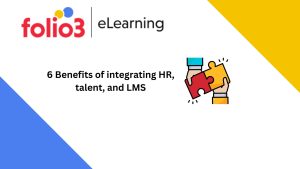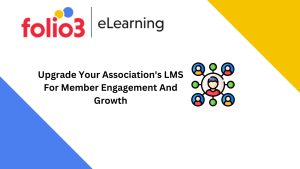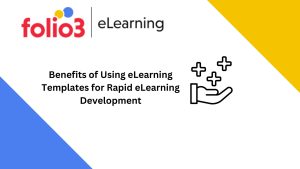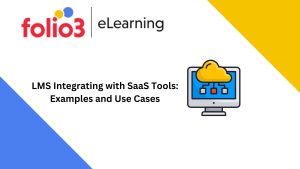
Executive Summary:
Education is being transformed by the collaboration between Software as a Service (SaaS) products and Learning Management System (LMS) integration services. Find out how the blending of LMS and SaaS is affecting the future of education, from video conferencing to analytics.
Introduction:
Learning Management Systems (LMS) and Software as a Service (SaaS) applications have become integral to education in today’s fast-paced environment.
Through this convergence, institutions and instructors will be able to enhance the capabilities of their LMS systems and give students access to a more personalized, effective, and engaging learning environment.
This blog will explore how SaaS technologies and LMS integration services reshape education.

Improving Learning with LMS Integration and SaaS Tools
When Learning Management Systems (LMS) and Software as a Service (SaaS) solutions are combined, an innovative and engaging educational ecosystem is produced.
This convergence delivers more than simply ease; it also causes a fundamental change in how education is provided, enjoyed, and appreciated.
- Video Conferencing Solutions:
The combination of cutting-edge Video Conferencing Solutions with Learning Management Systems (LMS) marks a significant advancement in the field of online learning.
For students worldwide, this symbiotic relationship combines the strength of LMS integration services with the transformative powers of SaaS-based video conferencing solutions to produce an immersive and borderless learning environment.
Geographical restrictions become irrelevant when platforms like Zoom, Microsoft Teams, or Google Meet are integrated with an institution’s learning management system (LMS). Teachers now have the power to conduct real-time virtual classes outside the traditional classroom’s boundaries.
To create a richer virtual learning environment, instructors can interact with students in real-time dialogues, deliver interactive material, and answer questions.
- Reporting and Analytics:
Using strong Analytics and Reporting Software as a Service (SaaS) technologies in conjunction with Learning Management Systems (LMS) has fundamentally changed how educational institutions evaluate and improve their teaching approaches.
This integration builds a strong data ecosystem, providing educators, administrators, and institutions with the information they need to make wise decisions.
Data can be analyzed using analytics tools to show trends in the performance of specific students. Teachers can identify pupils needing more assistance and adjust learning curricula accordingly.
For instance, if data reveals that a specific idea is difficult for a particular group of students, educators can offer more resources or alter their teaching style to meet these issues.
- Content Creation and Management:
The creation, delivery, and consumption of educational content have been revolutionized due to the integration of Learning Management Systems (LMS) with Content Creation and Management SaaS applications.
LMS integration with SaaS tools equips teachers with various innovative tools and streamlines the delivery of interesting content to students, resulting in a more engaging and productive learning environment.
The integration allows teachers to create course materials with various multimedia components, including animations, infographics, videos, and interactive simulations.
These engaging resources hold students’ interest while simplifying and enticing them to understand complicated ideas. Management and creation of content
Students differ in their preferred methods of learning. Some people might learn things more easily with visual aids, while others prefer hearing explanations.
Teachers can accommodate these tastes by using content production tools, ensuring students can access and understand the material well.
- Collaboration and Communication:
By combining learning management systems (LMS) with collaboration SaaS applications like Slack or Microsoft Teams, virtual classrooms can become active centers of communication and cooperation.
Both students and teachers can easily share materials, participate in group discussions, and work together on projects, simulating the collaborative settings found in real-world organizations.
The LMS’s collaboration facilities allow for real-time collaboration among students across distances. They can collaborate on projects, exchange ideas, and complete assignments without being physically close.
These tools enable engaging class discussions and participation outside of regular class hours. By participating in group conversations, asking questions, and getting clarification, students may ensure that learning is not limited to set times.
- eLearning Tools:
Integration with eLearning authoring SaaS platforms like Articulate Storyline or Adobe Captivate enables instructors to develop dynamic course content inside the LMS, giving students a more engaging learning environment.
Using eLearning authoring tools, teachers can develop interactive learning modules that promote student engagement. Drag-and-drop exercises, tests, simulations, and branching situations that adjust to different learner pathways can all be a part of this.
Educators might add multimedia components like films, animations, and audio recordings to make instructional materials more engaging and dynamic.
A more extensive and immersive experience benefits visual and auditory learners.
LMS with Saas Tools: Use Cases
Here are some real-world examples of the strength and adaptability of LMS integration with SaaS tools:
- Virtual Classroom Engagement
In a university setting, lecturers can deliver live virtual classes using video conferencing integration within the LMS.
These sessions are accessible to students from anywhere, and they can talk with one another and participate in discussion forums and real-time question-and-answer sessions. This use case ensures that learning remains fun and interactive even in remote environments.
- Student Group Projects
Education is based on collaboration. Integrating video conferencing enables students working on group assignments to meet virtually.
They can productively brainstorm ideas, communicate project updates, and debate specifics, improving teamwork and project results.
- Office Hours and One-on-One Sessions
Through video conferencing built into the LMS, professors and instructors can provide online office hours or one-on-one tutoring sessions.
Ensuring that students receive individualized support when needed strengthens the relationship between students and teachers.
Conclusion:
In conclusion, a new era of educational innovation has begun with integrating Learning Management Systems with Software as Service tools.
The possibilities are endless, from enhancing virtual classrooms with video conferencing to utilizing data analytics for individualized learning routes.
Educational institutions using SaaS tools and LMS integration services improve student learning while preparing them for a connected future. This synergy is a revolutionary force influencing the future of education, not just a trend.

FAQS – LMS Integrating with SaaS Tools
By utilizing the features of SaaS solutions to supplement the LMS, this connection improves accessibility, engagement, and efficiency in education.
Yes, this integration revolutionizes education by providing fresh approaches to student engagement, resource efficiency, and adaptability.
Yes, this connection can assist in identifying underperforming students and offering individualized guidance, perhaps enhancing overall performance, using data-driven insights and interactive content.
Administrative costs are decreased and productivity is increased by automating operations including reporting, scheduling, and resource allocation.









